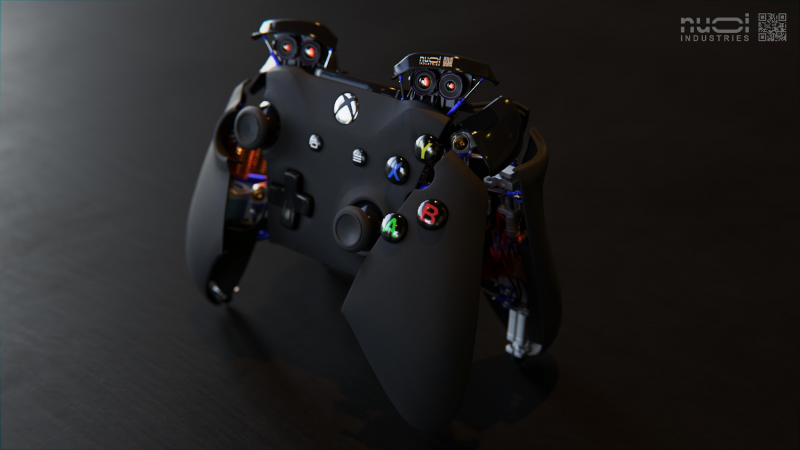
What Are the Best GPUs for Rendering in Blender 2.83?
As the final public release of the 2.8 series, Blender 2.83 is the software’s most comprehensive and definitive iteration to date.
The newest Blender release is 2.90 (as of August 2020), but it’s still prone to potential bugs, security fixes, and updates. Version 2.83, on the other hand, has achieved Long Term Support (LTS) status, which means that it will still be supported long into 2.90’s run as the mainline release.
In this article, we’re going to take a closer look at which GPUs are best for rendering your work, by exclusively evaluating rendering performance. We’ll be first evaluating GPUs independently and then heterogeneous computing (CPU+GPU).
GPU Rendering Performance
While there are many GPUs on the market today, we decided to compare the most powerful, yet most affordable options available to consumers. There are definitely other graphics processors that are more powerful than those on our list (which are primarily used in studios and CG workstations), but the cost is not realistic for most independent designers.
Our evaluation is based on the following GPU hardware.
| GPU Hardware | Memory | Price |
| AMD Radeon VII | 16 GB | $1,299 |
| AMD Radeon RX 5700 XT | 8 GB | $399 |
| AMD Radeon RX 5600 XT | 6 GB | $279 |
| NVIDIA GeForce RTX 2080 Ti | 11 GB | $1,199 |
| NVIDIA GeForce RTX 2060 | 6 GB | $349 |
| NVIDIA GeForce GTX 1660 Ti | 6 GB | $279 |
If you have any experience with Blender, you know that you have the option of two built-in rendering engines — Cycles and Eevee — that are designed to cater to specific needs. There are also third-party plugins, such as Radeon ProRender, which we are leaving out of this comparison.
Whichever Blender renderer fits your needs more succinctly — Cycles for its ray tracing and photorealism or Eevee for its fast rendering times and game-ready asset building capabilities — the real question is “What’s the best GPU out there that can give the fastest results?”
In order to evaluate the power and speed of each piece of hardware, a weighty but manageable file was necessary. The Xbox controller scene below was used to test out each of the GPUs on our list.
Though the controller was modeled in Cinema4D, the scene was animated and rendered at 4K resolution using Blender.

This free and open source .blend file was created and made available by reddit user u/ftolber on the r/Blender subreddit. Feel free to take a look, download the file, render it out on your own workstation, and compare your GPU hardware’s rendering times to those listed below.
Cycles
When rendering in Cycles, it’s always important to pay attention to your sample rate and your tile size. As we’ve mentioned in previous articles, the more samples you have, the higher the quality of your scene, but the longer the rendering time and the more taxing it is for your processor.
Tile size also plays an important role in how long the final render takes. The larger the tile size, the fewer processes the GPU has to compute.
Cycles Render / 150 Samples / Tiles 256×256
| GPU Hardware | Rendering Time (in seconds) |
| AMD Radeon VII | 164 |
| AMD Radeon RX 5700 XT | 193 |
| AMD Radeon RX 5600 XT | 258 |
| NVIDIA GeForce RTX 2080 Ti | 144 |
| NVIDIA GeForce RTX 2060 | 201 |
| NVIDIA GeForce GTX 1660 Ti | 239 |
According to the results, it appears that AMD’s Radeon VII and NVIDIA’s RTX 2080 Ti are the victors with the NVIDIA processor outperforming the Radeon VII by just 20 seconds. They both are very worthy processors.
Eevee
Eevee is a physically-based real-time engine unlike Cycles, which is a ray tracing engine. It’s preferred by some designers because of its speed and ease of use. It also only harnesses the power of your machine’s GPU. So, which GPU makes it go even faster?
Eevee Render / 1000 Samples
| GPU Hardware | Rendering Time (in seconds) |
| AMD Radeon VII | 353 |
| AMD Radeon RX 5700 XT | 298 |
| AMD Radeon RX 5600 XT | 338 |
| NVIDIA GeForce RTX 2080 Ti | 144 |
| NVIDIA GeForce RTX 2060 | 283 |
| NVIDIA GeForce GTX 1660 Ti | 338 |
Like before, NVIDIA’s GeForce RTX 2080 Ti gives the fastest render output. However, unlike the Cycles render results, the superior AMD GPU seems to be the Radeon RX 5700XT.
CPU+GPU Rendering Performance
CPU+GPU rendering, or heterogeneous rendering, allows you to use the power of both your central and graphic processors to produce your renders. Blender has offered this feature since 2.80, but great improvements have been made to its implementation since then.
Our evaluation is based on the following CPU hardware.
| CPU Hardware | Cores | Ghz | Price |
| AMD Ryzen 9 3950X | 16 | 3.5 | $749 |
| AMD Ryzen 9 3900X | 12 | 3.8 | $499 |
| AMD Ryzen 7 3700X | 8 | 3.6 | $329 |
| Intel Core i9-10980XE | 18 | 3.0 | $999 |
| Intel Core i9-10900K | 10 | 3.7 | $499 |
| Intel Core i5-10600K | 6 | 3.8 | $263 |
For this test, only Cycles was used. As mentioned earlier, Eevee only uses the power of the GPU to render. Though it’s possible to use AMD processors for CPU+GPU rendering, the only two GPUs that were evaluated for this test were the NVIDIA 2060 and 2080 Ti.
Cycles Render / 150 Samples / Tiles 32×32
| CPU Hardware | RTX 2060 Rendering Time (in seconds) |
RTX 2080 Ti Rendering Time (in seconds) |
| AMD Ryzen 9 3950X | 109 | 100 |
| AMD Ryzen 9 3900X | 122 | 110 |
| AMD Ryzen 7 3700X | 137 | 122 |
| Intel Core i9-10980XE | 112 | 102 |
| Intel Core i9-10900K | 123 | 108 |
| Intel Core i5-10600K | 143 | 125 |
It appears that CPU+GPU rendering clearly has the advantage over rendering only with a GPU. Bringing rendering times down even more, the best CPU+GPU combination in our test is the AMD Ryzen 9 3950X with the RTX 2080 Ti as its GPU. The Intel i9-10980XE comes in second.
Note: Radeon’s ProRender also allows for CPU+GPU rendering, so if you think your machine may be able to handle it, it’s definitely worth trying.
Final Considerations on GPU Rendering in Blender
Though these comparisons mainly focused on rendering performance, there are still other factors to consider when making the decision to upgrade your machine. Things like viewport performance, OptiX, and AI denoising are all still important when running Blender. Radeon VII is indeed the most powerful and most affordable, but AMD currently doesn’t offer OptiX implementation, which is only available using NVIDIA graphic cards.
You don’t necessarily need a top-of-the-line workstation with the most current hardware to get the job done either. You can get away with less and still make beautiful work. Blender 2.90 is almost perfect, so in the coming year, things will certainly be even more exciting. Happy rendering!